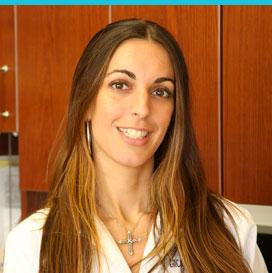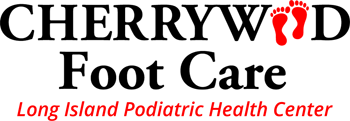
22 May Rehabilitating a Broken Toe – Podiatrist in Massapequa
Broken toes are considered a more common injury than you may have initially presumed. Despite the commonality, many patients aren’t immediately aware that one of their toes has broken. Anatomically, the structure of each toe is made up of copious connecting bones, increasing the likelihood that they can be damaged/fractured. Under normal circumstances, injury can be stimulated from accidents such as stubbing your toe on a piece of furniture or someone unknowingly stepping on a toe. A broken toe can also occur from constant repetitive motions that may inevitably lead to the toe fracturing. If you’re experiencing discomfort in your toes and feel as though you may have suffered a break, contact Cherrywood Foot Care and our podiatrist in Massapequa for expert assistance!
Symptoms
After the injury has occurred, you may experience common symptoms such as swelling, pain, and difficulty moving the affected area. Customarily, the toe may look unusual, with deformities such as bending or looking as though it’s not in the proper position. Also, regular activities such as walking may become painful and difficult to continue. Wearing shoes may suddenly become painful as well, focus on whether or not you were feeling pain prior to injury in order to determine the extent of your complication. Other not as common symptoms can include numbness or tingling sensations radiating from the injured toe. Damage may have also occurred to the toenail itself, which can be treated with the help of a podiatrist in Massapequa.
If left untreated, patients put themselves at risk for the toe not fully healing properly or healing incorrectly. Thus, further complications such as deformities and constant/chronic pain may gradually develop. In some cases, broken toes can also serve as a catalyst for arthritis development in the area surrounding that toe. In these particular instances, surgery may soon become the only viable option for treatment. Thankfully, our podiatrist in Massapequa can provide an extensive evaluation to determine whether or not your injury requires surgical intervention.
If you are diagnosed with a broken toe, a podiatrist can also recommend the following nonsurgical treatment interventions:
- Elevate the foot.
- Ice the injured toe.
- Keep pressure off the injury by using crutches.
- Wear a specially fitted walking boot.
- Take pain medication.
In minor cases, your toe may heal on its own over the course of six weeks. If the toe is severely injured, you may require surgery. For further questions regarding broken toes and treatment, contact our office today for assistance.
Dr. Erica Papathomas

Erica Papathomas, DPM graduated from St. John’s University with a Bachelor of Science degree in biology as a major and chemistry as a minor. She then attended the New York College of Podiatric Medicine, where she graduated with her DPM with honors. Thereafter, she received her Podiatric surgical training at Mount Sinai Hospital, which included an orthopedic trauma rotation working closely with high ranked podiatric and orthopedic surgeons. Dr. Papathomas is well trained in both forefoot and rearfoot surgery.
Dr. Papathomas is licensed in New York and board certified by The American Board of Podiatric Surgery in foot and ankle surgery. She is a member of The American Podiatric Medical Association. Dr. Papathomas is currently on staff at Mount Sinai Hospital of Queens and St. Joseph Hospital in Bethpage.
Integrity, teamwork, leadership and excellence represent essential principles in every aspect of her life. Dr. Papathomas applies and upholds these standards as a dedicated student, resident, and an active contributor to the community.
Cherrywood – A Podiatrist Near Me
At Cherrywood Foot Care, we have a staff of podiatrists in Massapequa who are ready to help treat any pain or foot condition you have. However, what can we help treat you with? The following are only a sample of some of the different foot conditions and disease that we can help you with:
Arthritic Pain
As we age, arthritis is a condition that may begin to affect our bodies. It can occur in almost any place throughout our bodies and can cause discomfort making it difficult to perform daily tasks. One area in which arthritis can have a big impact on your life is on your feet. It can make even the simplest of tasks like getting up and walking, much more challenging. Thankfully at Cherrywood Foot Care, our podiatrist in Massapequa can help treat your symptoms and make them more manageable.
Arthritis is a degenerative joint disease that will cause the joints in your body to deteriorate or wear down over time. This causes pain and discomfort because it can lead to bones rubbing against each other due to the lack of cushioning and cartilage in the joints. This can be especially uncomfortable in the feet because of the constant pressure and use on an everyday basis.
Symptoms of arthritic feet
- Pain and tenderness of the feet
- Pain with motion of the feet
- Limited or reduced ability to walk, stand, or put weight on your feet
- Swelling of the feet or ankles
- Stiffness in the joints
- Warmth and redness in your feet
How we can help
Our podiatrist in Massapequa on Long Island can help you manage and ease the pain you are experiencing from your arthritis. We offer a number of services that can help make your life more comfortable. One of these services is orthotics, orthotic inserts can help to provide proper support and cushioning for your feet, that will allow you to walk with more ease and comfort. Another service that we offer is physical therapy. Our doctors will be able to provide you with excellent stretches and exercises that will give you a way to combat the stiffness and soreness that is often associated with arthritis in the feet.
Fungal Nails
Nail fungus is a common foot condition that can be difficult to treat. At its core, nail fungus is a skin infection under the nail. While this condition is not painful, it can still cause obvious visual side effects. The symptoms include fragile nails, nails with a yellowish color or with white spots, nails with heavily distorted shapes, or the nail can even completely detach from the skin. When left in a warm and moist environment for too long, nails will begin to develop fungus. While this fungus can sometimes affect fingernails, most people will experience nail fungus with their toenails. This is because shoes can create the conditions needed for the fungus to grow. If left untreated, the nail fungus can continue to spread to the other toes and the surrounding skin. Thankfully, there are several treatment options for patients. Laser treatment is one of the newest and most effective ways to treat toenail fungus. Our podiatrist in Massapequa at Cherrywood Foot Care can use this procedure to eliminate toenail fungus and its symptoms.
The entire laser process is simple and extremely safe. For this procedure, infrared light is used to eliminate the pathogens that cause toenail fungus without doing damage to the nail or the toe. While 2-3 laser treatments are usually needed to maximize its effectiveness, most people will experience immediate relief after the first procedure. The entire procedure can last between 20 and 30 minutes.
There are several unique benefits of using laser treatment to treat toenail fungus. These benefits make it a fantastic alternative to other treatment options such as medication. One primary benefit is that there are no severe side effects. In some rare cases, a person might feel slight discomfort after the procedure is over. These feelings are insignificant and will quickly dissipate. In addition to the lack of side effects, there is also no recovery period after the procedure.
Here at Cherrywood Foot Care, laser treatment is just one way our podiatrist in Massapequa can treat toenail fungus. In addition to this procedure, we will also provide several steps that you can take to prevent future infections.
Ingrown Toenails
With more than 3 million cases annually, ingrown toenails are one of the most common issues that may occur on your feet. While easy to recognize, the best course of action when suffering from an ingrown toenail is to contact a podiatrist in Massapequa for proper treatment.
Do I have an ingrown toenail?
If you are experiencing any of the following symptoms, you may have an ingrown toenail:
- Pain and tenderness on one or both sides of the nail
- Redness around the toenail
- Swelling around the nail
- Infection around the nail
Can I prevent an ingrown toenail?
There are a few ways you can help prevent an ingrown toenail from forming. Follow these tips, and regular appointments with a podiatrist in Massapequa to help prevent an ingrown toenail:
- Trim your toenails straight across
- Keep toenails at a moderate length
- Wear shoes and socks that fit properly
- Wear protective footwear
- Regularly check for signs of early ingrown toenails
What do I do about my ingrown toenail?
If your ingrown toenail does not show signs of infection, and you do not have disorders that endanger your feet, such as diabetes or poor circulation, you can try a few home remedy options.
- Soak your feet in room temperature water and gently massage the swollen area around the toenail. Adding Epsom salt to your soak may be recommended by your doctor.
- Avoid a so-called bathroom surgery. Cutting the nail yourself may cause the condition to worsen over time.
- Don’t place anything under the nail. While many believe cotton or floss under the nail will relieve pain, it only will make the condition worse by giving bacteria a place to multiply.
The best course of action if you have an ingrown toenail is to contact a podiatrist in Massapequa. At Cherrywood Foot Care, we offer the top of the line treatment options for ingrown toenails, along with many other painful foot conditions. Some of our recommended treatment options may include:
- Prescription of an oral antibiotic
- Minor surgery to remove the offending nail
- Minor surgery to prevent a recurring ingrown nail
If you have an ingrown nail or any other foot injury or condition, Cherrywood Foot Care can help! Let our skilled team help you get back on your feet and feeling your best!
HMFD (Hand, Foot and Mouth Disease)
What actually is hand, foot, and mouth disease (HMFD)? HMFD is a viral illness that affects young children, usually younger than the age of 5. However, older children and some adults can also contract HFMD. You may realize you have contracted HFMD if you’re suffering from sores in the mouth, a rash on the hands and feet, a fever, sore throat, and/or reduced appetite. While this illness can spread easily, it usually can clear up on its own within 7 to 10 days. Luckily, Cherrywood Foot Care and our podiatrist in Massapequa offers treatment for HFMD.
How can you contract it?
It’s important to know that HFMD is caused by a strain of coxsackievirus, the most common being coxsackievirus A16. Since viruses are so easily spread from person to person, there are a few ways you could have contracted HFMD:
Saliva
Blister fluid
Feces
Direct contact with someone’s cough or sneeze
Contact with another child/persons unwashed hands
How can you treat HFMD?
There are some treatments you can utilize to treat HFMD. These treatments include, but aren’t limited to:
- Essential oils
- Lavender or lemon can help
- Over the counter medications, like Tylenol or Advil
- A salt water rinse and bath
- Coconut oil
- Apple cider vinegar
How can a podiatrist in Massapequa treat HFMD?
If home remedies aren’t helping, your best bet would be to visit a doctor. At Cherrywood Foot Care, our podiatrist in Massapequa can offer medications to help relieve the irritation caused by HFMD. By seeking medical help, you will be able to tell if you’re is still contagious or if further attention is needed. It will most likely be suggested that you apply anti-itch cream to hand or foot areas to stop you from touching the virus and spreading it.
Neuromas
Are you experiencing pain while going through your daily routine? Is the pain coming from your toes? Well, you might be suffering from a neuroma. A neuroma could also be referred to as a pinched nerve, or even a nerve tumor. They are benign growths of nerve tissue, that most commonly act up while you’re walking. You could experience a burning sensation, tingling, or even numbness between your toes while doing daily activities. Most people suffering from a neuroma find relief when they take a break, remove their shoes, or even rub the area that’s giving them pain. While that seems like a simple fix, it can get repetitive to continue disrupting your routine like this. So why not visit a podiatrist in Massapequa to get rid of this problem completely? At Cherrywood Foot Care, Dr. Joseph Burke and his team of doctors are equipped to treat your neuroma with the most up-to-date and cutting-edge technology available.
Causes
So you may be wondering, how did I get this neuroma? While doctors haven’t exactly pinned down the direct cause yet, there are a few explanations as to why you may be in pain. To start, anything causing irritation to the nerve, or even constricting it, can cause the start of a neuroma. Meaning, wearing proper footwear is extremely important if you’re looking to prevent this. Aside from wearing the wrong shoes, these are a few other causes of neuromas:
– Repeated stress on the area
– Trauma causing inflammation or swelling in the toes
– Suffering from high-arched feet or flat foot
– Bunions
– Hammertoes
Symptoms
If you’re suffering from a neuroma, the symptoms may not seem so bad at first. They start to creep up on you slowly. You may feel some irritation or pain every once in a while at first, but as time passes it’ll become more often. Rather than finding temporary solutions to relieve your pain though, you may want to visit a podiatrist in Massapequa if you’re experiencing any of the following:
– Tingling
– Burning sensations
– Numbness
– Feeling like something in your shoe and/or sock is “bunched up”
– Pain between your toes
– Most commonly between the third and fourth
– Swelling between the toes
– Having pain in the ball of your foot when putting weight and/or pressure on it.
How can a podiatrist in Massapequa treat my neuromas?
After enlisting the help of a doctor, there are a few treatment options available. A podiatrist will decide which treatment is best depending on the severity of your symptoms. More often than not, they will suggest a non-invasive treatment. Those options include:
– Padding and taping to change any abnormal foot functions that could be causing the neuroma.
– Anti-inflammatory medications
– Orthotics, which are custom designed shoe inserts to help reduce some of your symptoms
If you’re still experiencing pain after trying these solutions, a surgical option may be the next step. Based on your pain, a podiatrist may suggest:
– Cortisone injections
– Decompression surgery
– Removal of the nerve causing the neuroma
What is a wart?
A wart is a viral infection that can spread rapidly when untreated. Although they’re harmless, foot warts can be especially painful. The infection can be caused by cuts or abrasions on the skin, whether they’re big or small. When it comes to our feet, warts can be found on almost any area. They are normally raised and can be easily seen with its fleshy appearance. If you have noticed any warts recently and are looking to get rid of them, set up an appointment with Cherrywood Foot Care, a podiatrist in podiatrist in Massapequa. Our location is convenient for anyone living in Bellmore, North Bellmore, Merrick, Wantagh, and East Meadow, NY.
What is a plantar wart?
Plantar warts, also known as verrucas, can be identified as hard, grainy growths that are located on the bottom of the foot. Unlike other warts, the plantar wart can be identified through these features:
– Non-raised or flat appearance
– A coarse surface on the foot
– Gray/brown coloring
– Black dots or pinpoints near the center of the wart
How do they form?
You might be wondering, “how did I get this wart?” There are countless ways you could have contracted this virus. Kids and teens are more likely to contract warts than adults, but this does not mean everyone shouldn’t be aware of them. There are a few ways you can contract foot warts. Those may include:
– Direct contact with the skin of another wart (whether that is another person or from your own skin)
– Walking barefoot in public areas
– Poor foot hygiene
– Not changing your socks and shoes regularly
– Scratching or picking at a wart you already have
How can our podiatrist in Massapequa treat your foot warts?
Although you may think your wart is gone forever, it’s extremely common for warts to eventually recur as time passes. The longer you wait to treat your warts, the more likely your wart will either grow or spread out into a larger cluster of warts. At Cherrywood Foot Care, our team will be able to determine the best treatment for your foot warts.
There are a few ways Cherrywood Foot Care and our podiatrist in Massapequa can help take care of your warts. These treatments include:
– Ointment/Medication
– Acidic ointments or medications can be used to break down a wart over a period of time.
– Laser removal
– A laser can be used to vaporize a wart from the body.
– Laser removal is used in more severe cases.
Jones Fracture
A Jones fracture is a foot injury involving the fifth metatarsal along the outside of the foot connecting to the pinky toe. Because Jones fractures are often mistaken for ankle sprains, they often go undiagnosed and can lead to more serious problems. Luckily, our podiatrist in Massapequa at Cherrywood Foot Care can help you with whatever fractures in your feet you might have.
Some of the symptoms of a Jones fracture may include some of the following:
– Pain and swelling on the outside of a foot at the base of the little toe
– Difficulty walking
– Bruising
At Cherrywood Foot Care, our podiatrist in Massapequa will diagnose your Jones fracture by examining your foot, asking about the pain you are having, and taking x-rays. After receiving a diagnosis, your doctor will show you how to treat your injury. The best way to take care of your foot is by giving it as much rest as you can, as well as applying ice to the affected area and elevating your foot when possible.
However, sometimes a Jones fracture might require surgery, depending on the severity. If surgery is required for you, our podiatrist in Massapequa will show you how to care for your injury after the surgery. Depending on your condition, you might be able to put weight on your foot seven to 14 days after your surgery. It might take as much as three to four months to regain full mobility.
Our podiatrist in Massapequa are there for your metatarsal injuries, and we want to provide excellent care depending on the severity of your condition. Whatever the cause of your injury is, we want to help you get back on your feet and be able to enjoy life again, pain-free. If you think you might have suffered a Jones fracture, you can make an appointment and we will look at it, and tell you what you need to make the pain stop.








